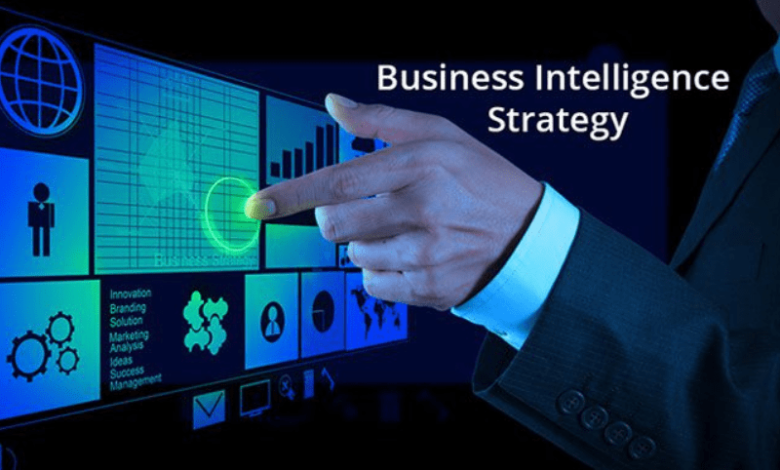Utilizing Artificial Intelligence (AI) in Business Intelligence Strategic Advancement in 2025

The combination of Business Intelligence (BI) Tools and Artificial Intelligence (AI) have been on the forefront of all technological advances, especially for businesses striving to be relevant, innovative, and in business during such turbulent financial periods as those expected in 2025. The sheer volume of data that will be generated will need specific technologies to ensure that businesses make informed decisions, optimize operations to be ever-ready, and accurately anticipate forthcoming trends. This article focuses on the most important factors of Artificial Intelligence and Business Intelligence pertaining to the most effective strategies for businesses along with their best practices and current trends.
What Is Business Intelligence (BI) and Artificial Intelligence (AI)?
Business Intelligence (BI)
Business Intelligence means the technologies and practices related to the collection, analysis and presentation of information in an appropriate manner so that it may be used in decision making. With the assistance of BI tools and along with raw data, businesses can obtain vital insights which enable them to understand the market as well as customer needs and identify trends.
Artificial Intelligence (AI)
These are the intelligence displayed by machines or devices which is programmed in such a way that it can mimic human intellect and learn from the data it is fed with. In business, AI refers to machine learning, 자연어 처리, and 예측분석. It enables firms to automate their processes, assists in pattern recognition, and enables instantaneous decisions based on data analysis.
The Synergy Between BI and AI
The integration of both Business Intelligence and Artificial Intelligence ensures that both aspects are functioning optimally. Business Intelligence is centered on collecting and analyzing data from the past, while AI takes care of predictive analytics, forecasting, and real-time decision processes. When AI is integrated into BI systems, companies are able to further refine and improve strategies, insights, and efficiency of operations on a new level.
Emerging Influences Affecting BI and AI Techniques in 2025
1. AI-Powered Analytics
The way business data is interpreted and understood is changing due to AI-powered analytics software. Framing techniques, classification, or even more advanced forms such as neural networks permit businesses the opportunity to identify sophisticated patterns, unlike more traditional methods. For example, employing RNNs in time-series demand forecasting improves accuracy by 20%, thereby decreasing inventory costs by 15%. Algorithms’ precision detecting fraudulent transactions also stands at 95%, streamlining unnecessary costs even further.
Case Study:
- Retailer X leveraged AI-based predictive analytics for peak season demand forecasting and achieved a 30% reduction in stockouts, and a subsequent 25% increase in overall customer satisfaction. (source)
2. Augmented Analytics for Smarter Insights
Augmented analytics, which uses AI and Machine Learning for Automation in BI processes, enables self-service data preparation, analysis, and dissemination. This increases the ability of both technical as well as non-technical users to grasp the insights embedded in data.
Example:
- WPP’s acquisition of InfoSum illustrates the application of AI to augmented analytics, allowing the marketing behemoth to better leverage first-party data to enhance customer interactions (source).
3. Cloud-Based BI and AI Solutions
Cloud computing significantly enhances the scalability of BI and AI. With cloud platforms, companies can store and analyze large volumes of data without having to spend on costly infrastructure. In addition, it enhances collaboration since businesses can access real-time data and insights from any location.
Benefits:
- Cost Efficiency: Cloud services reduce the need for physical infrastructure which is beneficial to a company’s resource allocation.
- Flexibility: On-demand computing power provided by the cloud is critical for processing large datasets.
Risk:
- Data Security: Protecting sensitive information stored in the cloud requires advanced security protocols to prevent unauthorized access.
4. AI for Cyber Security in BI
The modern global landscape has witnessed a drastic increase in the amount of data that businesses collect. This brings the ever-growing problem of cyberattacks alongside the attempt of data collection. AI has become a major player in cybersecurity and has proven especially useful in protecting systems against fraud, phishing, and system vulnerabilities.
How AI helps in Cybersecurity:
- Threat Detection: AI can help detect a cyber attack from within an organization by monitoring network activity and looking out for abnormal behavioral patterns.
- Automation: With the use of AI, organizations are now being able to respond to a cyber security threat as soon as it happens, cutting the need for human involvement, therefore removing delays pertaining to response mitigation.
Example:
- Darktrace, An AI designed to help businesses manage their own cybersecurity, employs machine learning to detect unusual activity in business networks. The system is capable of detecting breach attempts within 3 seconds enabling action to be taken to avert potential harm.
5. Data Governance and Ethics in AI
The adoption of AI and BI by organizations requires compliance with laws such as the General Data Protection Regulation (GDPR) and California Consumer Privacy Act (CCPA), which enforce data privacy policies. Maintaining neutrality in machine learning algorithms, AI decision-making transparency, and other ethical concerns are also important.
Steps for Ensuring Data Governance:
- Grant clear data ownership to specific individuals within the organization.
- Periodically review AI algorithms for ethical discrimination.
- Adherence to privacy regulations.
Guiding Strategies for the Application of BI and AI
1. Establish Goals
Analyse your business to understand areas that require improvement, such as customer retention, marketing forecasting, and supply chains. Make sure the selected technologies and tools will be beneficial to the business objectives.
Metrics to Monitor:
- Return on Investment: Rather than general revenue, evaluate the impact of BI and AI spending.
- Customer Satisfaction: Measure the overall engagement rate with the brand as an outcome of tailored AI-based recommendations.
4. Embrace a Data-Driven Culture
Foster a culture where all employees across functions and departments are encouraged to make decisions based on data. Offer courses on data interpretation and Business Intelligence (BI) tools, making data-driven thinking part of the company ethos.
5. Monitor and Iterate
Evaluate the effectiveness of the BI and AI systems on a regular basis. These can be evaluated based on accuracy, timeliness, and ROI among other metrics. Adjust business approaches and strategies considering these outcomes.
Ways to Deal with Challenges Associated with Implementing BI and AI
1. Talent Shortage
Implementing AI and BI comes with its own challenges. One of them is that there are few people in the market with skills in machine learning, data science, and analytics. Companies need to either train their employees or subcontract to reputable companies.
2. High Initial Costs
The upfront costs for small to medium enterprises (SMEs) attributed to implementing AI and BI may be steep. However, improved efficiency, decision-making, and customer retention related ROI from the investment will outweigh the cost in due time.
3. Integration Complexities
Integrating Business Intelligence (BI) and Artificial Intelligence (AI) with already existing company systems can pose certain level of operational risk. This task requires help from skilled IT experts that will help eliminate risk of business disruption.
Conclusion: The Future of Business Intelligence and AI
The synthesis of Business Intelligence with Artificial Intelligence has the potential to unlock accelerated growth, heightened efficiency, and innovative business models by 2025. With these technologies, businesses will be able to convert unprocessed data into actionable insights, improve strategic decisions, and sustain relevancy within the volatile market landscape. Like any venture, success and value in AI and Business Intelligence systems is contingent upon the selection of tools, ethical data handling mechanisms, and iterative value optimization strategies.
Related Articles: Business Strategy for 2025: Analysis, Innovation, and Tips





